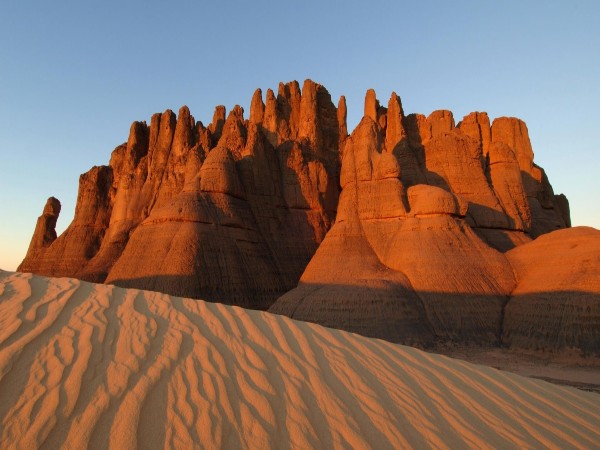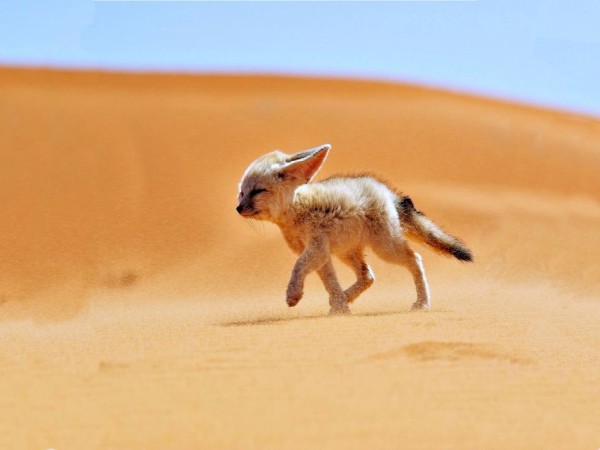In the Sahara, at least when the sun is high, there are no horizons - only a milky vagueness whose bounds might be either near or far. Driving south though, from the oasis of In Salah towards the centre of the great desert, you slowly become aware of a distant hardening in the opacity, a darkening that reaches far to either side.
Gradually this resolves into the towering and seemingly endless cliff that is the outermost bastion of Algeria's Ahaggar massif. Astonishing even among Africa's formidable list of astonishments, Ahaggar is a huge island - roughly the size of France - set in the ocean of the Sahara. Bounded on three sides by beetling cliffs, on the west, it slides off into the Tanezrouft, the Land of Thirst, in which, in the old days, a traveller left behind by a caravan would simply compose himself to die.

Though it is known as a mountain range, Ahaggar - also called The Hoggar - is a high granite with 600ft (180m) of basalt, splintered and broken like the surface of a huge slag heap.
Out of this, rising to a height of nearly 10,000ft (3000m) is a fantastic array of towers, stacks and needles composed of phonolite, another volcanic rock. As it cooled, the rock broke into long prismatic shapes, generally likened to organ pipes, though some resemble nothing so much as gigantic bunches of asparagus standing on end.
In one 300sq mile (777sq km) area of Atakor there are more than 300 of these monoliths, adding unexpected shapes to a landscape already stark beyond imagining. The Tuareg, nomadic people associated with the Ahaggar for at least 2000 years, call this place Assekrem, 'the end of the world.

Among the mountains there is no vegetation at all, and little enough throughout the entire Ahaggar massif. Rainfall is sporadic and brief, yet here and there in steep-walled canyons that delay evaporation, it collects in pools that encourage a little greenery and offer an illusion of coolness in their depths. Few though they are, the pools are of immense importance to the herds of the Tuareg.
People of the Veil
The Ahaggar Tuareg are a striking people. Tall and fair-skinned, the men wear veils from puberty onwards, some say to prevent evil spirits from entering through the month. They carry long swords and daggers, and shields made from white antelope hide. According to some authorities, they are the descendants of mysterious charioteers who swept out of Libya about 1000 BC and are depicted in the rock paintings of Tassili.

Their name, Tuareg, is an Arabic term meaning 'abandoned of God, for they were late in their conversation to Islam, and still show some divergences from the strictest beliefs. The women go unveiled and have a powerful influence in family affairs, and Tuareg families are usually monogamous.
Until the late 19th century, the Ahaggar Tuareg ruled much of the desert from the oasis towns of Tamarasset and In Salah, where they dealt in ivory, gold and slaves, supplementing their income by extracting protection money from the caravans that passed by.

On hearing, in 1881, that these aspects of their livelihood were under threat from French plans to build a trans-Saharan railway, they responded by massacring almost the entire expedition that had been sent to reconnoitre the route.
Though the expedition had been both ill-organised and ill-led, and the tribesmen armed only with medieval weapons, the verve of the Tuareg charge and their sinister appearance earned them a reputation for invincibility in French eyes.



 Click it and Unblock the Notifications
Click it and Unblock the Notifications























